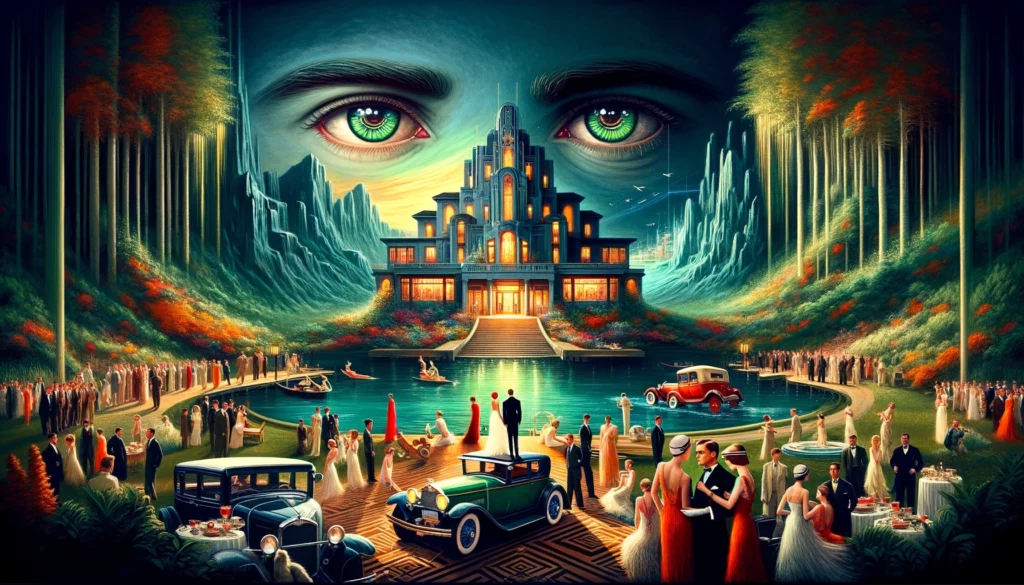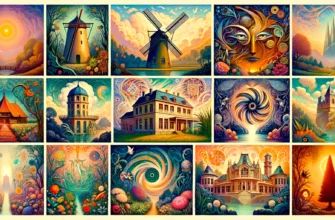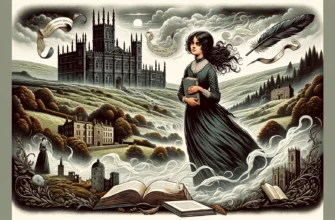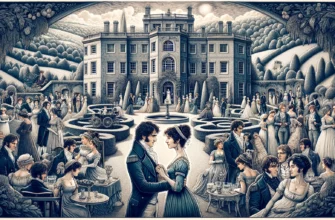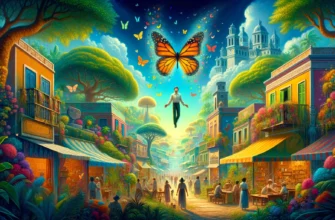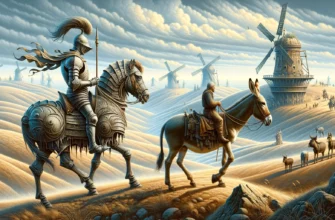The Great Gatsby by Scott Fitzgerald and the Roaring Twenties
F. Scott Fitzgerald, born on September 24, 1896, in St. Paul, Minnesota, swiftly became the chronicler of the Roaring Twenties, an era renowned for its cultural revolution and economic prosperity.
His upbringing in an upper-middle-class family gave him a unique vantage point, allowing him to observe the intricacies of high society, which he masterfully depicted in his novels.
The 1920s also witnessed Fitzgerald’s tumultuous relationship with Zelda Sayre, whom he married in 1920. Their passionate and often chaotic marriage profoundly influenced his writing, providing real-life inspiration for his novels’ complex relationships and characters.
The Roaring Twenties, a term coined to describe the distinctive cultural and social trends of the 1920s, was marked by significant economic growth, technological innovation, and a radical shift in social norms.
The era was synonymous with jazz music, flappers, speakeasies, and a general rebellion against traditional values. Fitzgerald’s literature encapsulated these elements and critically examined the disillusionment that lurked beneath the glitz and glamour, portraying the era as a time of dazzling possibilities and moral decay.
Fitzgerald’s acute portrayal of the 1920s was not merely an observation but a lived experience. His life mirrored the highs and lows of the era, characterized by his initial literary success, lavish lifestyle, and subsequent financial and personal struggles.
Through characters like Jay Gatsby and Nick Carraway, Fitzgerald conveyed the complexity of chasing the elusive American Dream during unprecedented prosperity and social change.
His work is a testament to the era’s opulence and underlying fragility, making him an essential figure in American literature and a keen observer of the human condition during the Roaring Twenties.
The Genesis of “The Great Gatsby”
The journey of “The Great Gatsby” from conception to publication is a tale of artistic struggle and personal reflection. Fitzgerald began formulating the idea for the novel in 1923, imagining it to solidify his reputation further as a leading voice of his generation. The initial drafts, however, took work. Fitzgerald grappled with the plot and characters, striving to create a narrative that accurately reflected the spirit and complexity of the time.
Throughout the development of “The Great Gatsby,” Fitzgerald’s personal life played a significant role. The chaotic nature of his marriage, combined with his observations of the affluent communities of Long Island, deeply influenced the novel’s themes and characters.
The opulent parties he attended, the flamboyant personalities he encountered, and his own experiences of love and disillusionment all found their way into the story’s fabric, enriching its narrative depth and emotional resonance.
After two years of intensive writing and revision, “The Great Gatsby” was published on April 10, 1925. Despite Fitzgerald’s high expectations, the novel received a mixed critical reception and sold modestly.
Only in the subsequent decades, particularly after Fitzgerald’s death, was the story recognized for its profound exploration of the American Dream, intricate symbolism, and meticulous portrayal of the Jazz Age. Today, it is a seminal work in American literature, a testament to Fitzgerald’s talent and his enduring insight into human ambition and desire complexities.
The Great Gatsby: An Overview
“The Great Gatsby” introduces readers to the enigmatic Jay Gatsby and the narrator, Nick Carraway, who moves to the fictional town of West Egg, Long Island, in the summer of 1922. Through Nick’s eyes, the reader encounters Gatsby’s world of wealth, obsession, and illusion. Gatsby, known for his lavish parties and mysterious background, is driven by his undying love for Daisy Buchanan, a love that ultimately proves to be his downfall.
As the narrative unfolds, the reader is drawn into the complexities of Gatsby’s pursuit of Daisy, set against a society obsessed with wealth and status. The novel masterfully weaves together themes of love, betrayal, and the corrupting influence of money, all while depicting the extravagant yet hollow nature of the American elite. The characters, from the aloof and beautiful Daisy to her brutish and unfaithful husband, Tom Buchanan, are intricately crafted to reflect the era’s moral ambiguity and material excess.
At its core, “The Great Gatsby” is a story of unattainable dreams and the disillusionment that often accompanies the pursuit of the American Dream. Gatsby’s tragic end serves as a poignant commentary on the futility of his idealism and the inevitability of his demise in a world ruled by materialism and deceit.
The novel’s narrative structure, rich symbolism, and profound themes make it a compelling story and one of the classic books to read for an insight into the human experience during one of the most vibrant and tumultuous periods in American history.
Dissecting the American Dream in “The Great Gatsby”
“The Great Gatsby” is a complex critique of the American Dream, exploring the allure and pitfalls of the relentless pursuit of wealth and status. Fitzgerald presents the American Dream as a flawed concept, epitomized by the novel’s protagonist, Jay Gatsby.
Gatsby’s life is a testament to the idea that anyone, regardless of their origins, can achieve success and happiness through hard work and determination. However, his tragic end underscores the novel’s message that the American Dream is often an illusion, marred by the harsh realities of society’s moral decay and superficiality.
Through characters like Daisy and Tom Buchanan, Fitzgerald dissects the hollowness of the upper class, portraying them as emblematic of a society that values wealth and status above morality and genuine human connection.
With her enchanting voice and superficial charm, Daisy represents the unattainable ideal that drives Gatsby’s obsession. At the same time, Tom’s brutishness and infidelity reflect the corruption and moral bankruptcy that underpin the glittering facade of the American elite.
The novel’s conclusion, marked by Gatsby’s futile pursuit of Daisy and his ultimate demise, is a powerful indictment of the American Dream. It suggests that individuals often lose sight of their moral compass and humanity in the quest for wealth and status.
Fitzgerald’s portrayal of the American Dream as a flawed and ultimately destructive ideal remains one of the novel’s most compelling and enduring themes, resonating with readers long after they turn the final page.
Symbolism and Imagery in “The Great Gatsby”
Fitzgerald’s symbolism and imagery in “The Great Gatsby” are integral to the novel’s rich narrative texture and thematic depth. One of the most iconic symbols in the book is the green light at the end of Daisy’s dock, representing Gatsby’s hopes and dreams for the future.
The green light is emblematic of Gatsby’s idealized vision of Daisy and his relentless pursuit of a future that is forever out of reach, symbolizing the elusive nature of the American Dream.
The eyes of Doctor T. J. Eckleburg, depicted on a faded billboard in the Valley of Ashes, are a haunting symbol of society’s moral and spiritual decay. These unblinking eyes, overlooking a landscape of desolation and despair, represent the loss of spiritual values in America, where materialism and greed have eclipsed genuine human connection and moral integrity.
The Valley of Ashes itself is a potent symbol of the social and moral decay of the time. Situated between the glamour of New York City and the luxury of West Egg and East Egg, the Valley represents the stark contrast between the wealthy elite and those marginalized and forgotten in pursuing the American Dream.
Fitzgerald weaves a complex tapestry of themes and motifs through these and other symbols, creating a novel as rich in symbolism as narrative complexity.
Critical Reception and Legacy
Upon its publication in 1925, “The Great Gatsby” received mixed reviews and sold only modestly. Critics admired Fitzgerald’s writing style but were less enthusiastic about the novel’s themes and characters.
It was not until after Fitzgerald died in 1940 that the novel began to receive the recognition it deserved. The post-war period saw a resurgence in interest in Fitzgerald’s work, and “The Great Gatsby” soon came to be regarded as a masterpiece of American literature.
The novel’s ascent to literary prominence coincided with a growing interest in the Jazz Age and the Roaring Twenties, with readers and scholars drawn to Fitzgerald’s vivid portrayal of the era. Over time, “The Great Gatsby” has come to be celebrated not only for its exquisite prose and profound themes but also for its precise and evocative depiction of the American experience during a time of unprecedented change and upheaval.
Today, “The Great Gatsby” is widely regarded as one of the greatest novels in American literature. It has inspired numerous adaptations, including films, stage productions, and even operas, attesting to its enduring appeal and relevance.
The novel’s exploration of themes such as the American Dream, social stratification, and the pursuit of happiness continues to resonate with readers, making it a timeless classic and a cornerstone of American literary heritage.
Modern Relevance of “The Great Gatsby”
The enduring appeal of “The Great Gatsby” lies in its timeless exploration of themes that are as relevant today as they were in the 1920s. The novel’s dissection of the American Dream, its critique of materialism and moral decay, and its portrayal of the complexities of love and desire continue to resonate with contemporary audiences.
Fitzgerald’s masterful depiction of the Jazz Age poignantly reminds us of the cyclical nature of history. Parallels can be drawn between the social dynamics of the 1920s and current societal issues.
In an era of economic uncertainty, social inequality, and pervasive disillusionment, “The Great Gatsby” remains a powerful commentary on the human condition. Though products of a bygone era, its characters embody universal human struggles and aspirations, making their stories profoundly relatable to modern readers.
As society grapples with the same questions of wealth, morality, and the pursuit of happiness that Fitzgerald so eloquently explored, “The Great Gatsby” endures as a beacon of literary genius. Its narrative complexity, thematic depth, and stylistic brilliance make it a critical element of the American literary canon and a vital and compelling reflection of the human experience.
